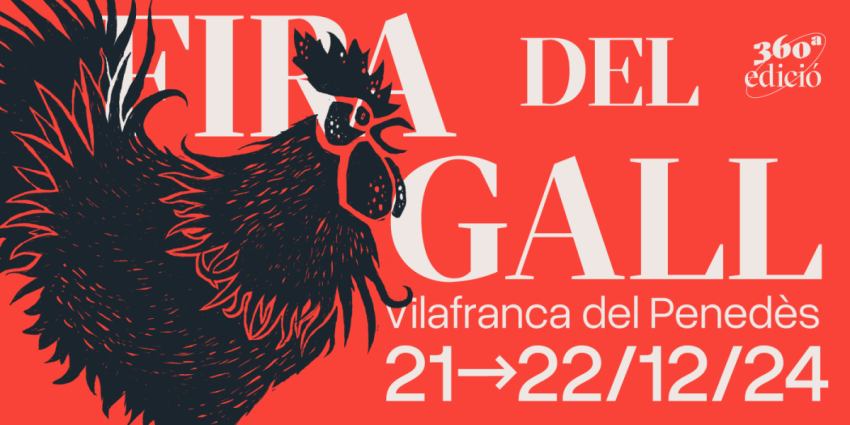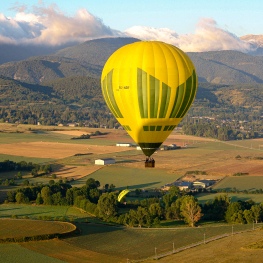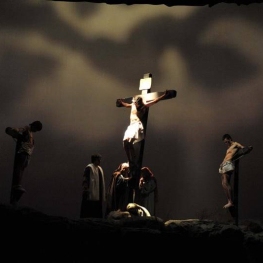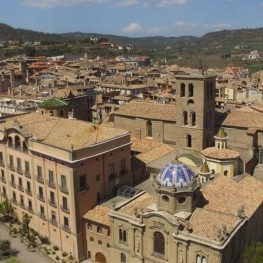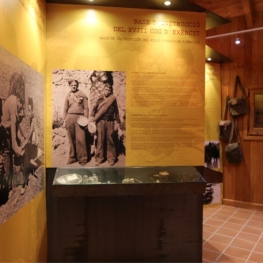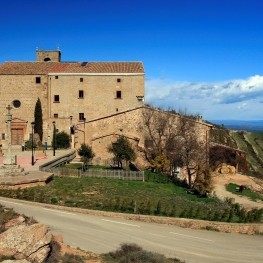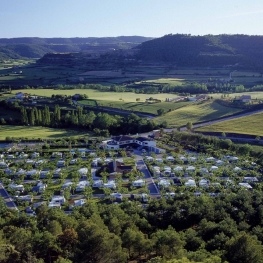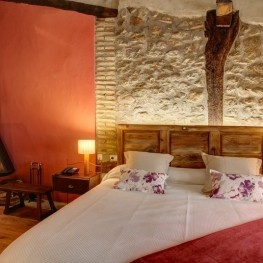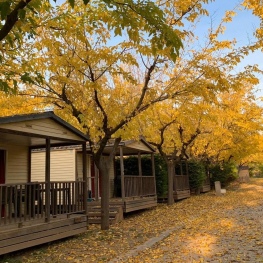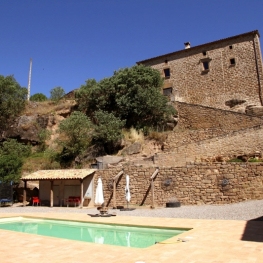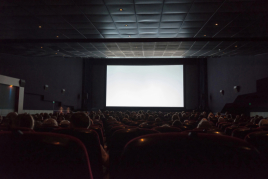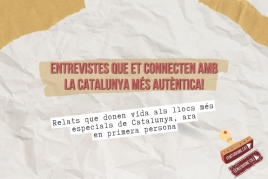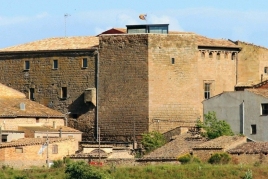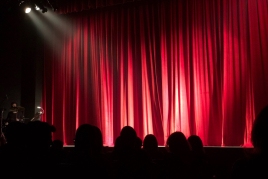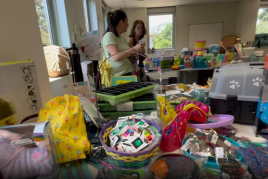Sanaüja route
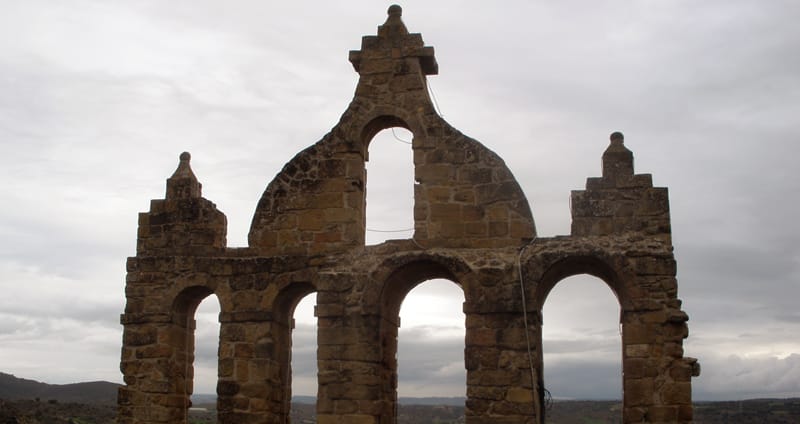
In the following lines we will take you to visit a city that is far from sure of the first in number of tourists, but, I assure you, keeps a large number of attractions and dare we say it will captivate you. We refer to Sanaüja, north of the region of La Segarra, a municipality Llobregós River Valley has five hundred inhabitants. Let's see if we can do that after this virtual tour hagais physically.
Your name, Sanaüja comes from the Basque words Zani-Goias, which means "keeper of the top." Possibly it has to do with the slightly elevated castle that dominates the village, and for 10 centuries and sanaugines sanaugins already had as a neighbor. The visit, yes, but all in good time. In fact, we left the castle to the end of everything.
 First I should explain how to get to this municipality of Segarra. By public transport it will take a little complicated: the company Alsa makes only one daily trip, both outward and back, connecting the city with Lleida and stops in towns such as Balaguer, Artesa de Segre and Ponts.
First I should explain how to get to this municipality of Segarra. By public transport it will take a little complicated: the company Alsa makes only one daily trip, both outward and back, connecting the city with Lleida and stops in towns such as Balaguer, Artesa de Segre and Ponts.
With private car, you should go get the C-1412, and then the C-1412a. We suggest you park your car in the courtyard that can be found in practically tocar- outskirts to the city, opposite the Augustinian convent the sanctuary of the Virgen del Pla, and so, once we arrived, begin our steps will lead us to discover a structure medieval streets, old bridges, beautiful squares and stone portals.
A convent with history
 Let's start! We have before the first two architectural and assets that include of Sanaüja. On the other side of the road where the center of the town, the convent and the sanctuary of the Virgen del Pla are located wall to wall, the extension of one another, but with very different states of conservation. Near the door an information panel tells the story of this place. He says in the same place a hermitage, where the Virgen del Pla, which was ceded in 1665 to the order of the Augustinians, the year 1735 raised the convent, and four decades later venerated church was constructed. Thus, a small community, formed by a prior, two priests and a coadjutor was established. Among the activities carried out, one was training with a school where they taught Latin. In the early nineteenth century, the community had to leave because of persecution and the state took over the building, which he sold in 1844 to Antoni Purroy. It seems that this sale deeply disliked neighbors Sanaüja, which, with the rector to head, armed themselves and attempted to seize the convent. Finally, some sanaugins pooled their savings and were able to buy the building.
Let's start! We have before the first two architectural and assets that include of Sanaüja. On the other side of the road where the center of the town, the convent and the sanctuary of the Virgen del Pla are located wall to wall, the extension of one another, but with very different states of conservation. Near the door an information panel tells the story of this place. He says in the same place a hermitage, where the Virgen del Pla, which was ceded in 1665 to the order of the Augustinians, the year 1735 raised the convent, and four decades later venerated church was constructed. Thus, a small community, formed by a prior, two priests and a coadjutor was established. Among the activities carried out, one was training with a school where they taught Latin. In the early nineteenth century, the community had to leave because of persecution and the state took over the building, which he sold in 1844 to Antoni Purroy. It seems that this sale deeply disliked neighbors Sanaüja, which, with the rector to head, armed themselves and attempted to seize the convent. Finally, some sanaugins pooled their savings and were able to buy the building.
In all this history, the sanctuary has gone pretty well stopped, and proudly shows his typically baroque façade and today venerated image of Santa Rita. They are curious two "false" entry next to the front door, while a single bell in the bell tower looks, and with an empty eye in which there should be a second bell.
Getting into the city
Now at last is the time to know the internals of Sanaüja. And it is as simple as crossing the road and take the street we found. Then, on the right, the cemetery we have, that if you want to enter, you can see the collection of sixty discoidal tombstones dating from the twelfth and eighteenth centuries.
 Back in the street will see several farms and tractors probably come and go, they give us a good example of the way to make the lives of many people of this land. We continue until we found a beautiful medieval bridge and which for many centuries was the main access to the population. It is the fourteenth and fifteenth centuries and consists of two arches, corbels and breakwater. The construction serves to save the stream of Sanaüja and then climbed Matadero Street where obviously found the building of the slaughter of 1924 by Roman numerals on its façade, and a public laundry.
Back in the street will see several farms and tractors probably come and go, they give us a good example of the way to make the lives of many people of this land. We continue until we found a beautiful medieval bridge and which for many centuries was the main access to the population. It is the fourteenth and fifteenth centuries and consists of two arches, corbels and breakwater. The construction serves to save the stream of Sanaüja and then climbed Matadero Street where obviously found the building of the slaughter of 1924 by Roman numerals on its façade, and a public laundry.
 We finished this way out to the plaza of San Roque, we observe the descent named after the same saint with its portal, cross the square and we will seek Bassal street that leads to the Plaza Placeta. It is a modern space with games for children, where the Town Hall, and we know that was inaugurated in 1995 by the plaque that commemorates it.
We finished this way out to the plaza of San Roque, we observe the descent named after the same saint with its portal, cross the square and we will seek Bassal street that leads to the Plaza Placeta. It is a modern space with games for children, where the Town Hall, and we know that was inaugurated in 1995 by the plaque that commemorates it.
The lone bell tower and The Portelleta
 We cross the Plaza Placeta continue down the street Bassal and turn right onto the street Escots, to leave the center Sanaüja, the Plaza Mayor. Irregular, porticoed arches different and full of nooks finished, the square is dominated by the parish church of Santa María, Gothic XVI century. The temple, however, has no bell tower and the motive we find in the castle, omnipresent in the lives of people throughout the centuries: the bells which, incidentally, is observed very well from the square - and they made the bell function.
We cross the Plaza Placeta continue down the street Bassal and turn right onto the street Escots, to leave the center Sanaüja, the Plaza Mayor. Irregular, porticoed arches different and full of nooks finished, the square is dominated by the parish church of Santa María, Gothic XVI century. The temple, however, has no bell tower and the motive we find in the castle, omnipresent in the lives of people throughout the centuries: the bells which, incidentally, is observed very well from the square - and they made the bell function.
 However, in 1929 itself a bell tower rose in the center of the town, but not attached to the church but a few meters of it. The tower, in the same square, is most curious, between two houses, and with a crown holding iron bells, very simple but he conceived a modern touch to this day.
However, in 1929 itself a bell tower rose in the center of the town, but not attached to the church but a few meters of it. The tower, in the same square, is most curious, between two houses, and with a crown holding iron bells, very simple but he conceived a modern touch to this day.
 The Plaza Mayor is the center of everything; from here they depart the different dollars that make Sanaüja this town of medieval urbanism. Portals and increase the feeling he does that then we will see, La Portelleta, charming, with several arches.
The Plaza Mayor is the center of everything; from here they depart the different dollars that make Sanaüja this town of medieval urbanism. Portals and increase the feeling he does that then we will see, La Portelleta, charming, with several arches.
To find it, we have to leave the square and go to the street of Moreh, turning immediately right. Then we passed the Water Street and arrived at the Valls street, we take a left to go up the road to the castle.
The five eyes
 Will we have promised: the castle would be an end of our journey, a finish that thought unbeatable, in a declared National Cultural Interest Monument, and with a splendid view over the rooftops of the city just go and much more there. Up to the castle is not difficult, take some air to cope with the steepest slopes and... once we're up! Connoisseurs say that is one of the oldest castles in the area, at least the eleventh century if not before, and which, yes, has distintass phases of construction and remodeling since.
Will we have promised: the castle would be an end of our journey, a finish that thought unbeatable, in a declared National Cultural Interest Monument, and with a splendid view over the rooftops of the city just go and much more there. Up to the castle is not difficult, take some air to cope with the steepest slopes and... once we're up! Connoisseurs say that is one of the oldest castles in the area, at least the eleventh century if not before, and which, yes, has distintass phases of construction and remodeling since.
 It is true that we have today imagine, more to see, the rooms of what was once a great defensive castle line Llobregós, but reaching it allows us to move through the remains of a building where he was ordained in 1583 Calasanz priest, enjoy the panoramic and closely observe this beautiful baroque bell belfry with five eyes of different sizes, four lower and one upper, and various decorative motifs, which remains impressive by the front door.
It is true that we have today imagine, more to see, the rooms of what was once a great defensive castle line Llobregós, but reaching it allows us to move through the remains of a building where he was ordained in 1583 Calasanz priest, enjoy the panoramic and closely observe this beautiful baroque bell belfry with five eyes of different sizes, four lower and one upper, and various decorative motifs, which remains impressive by the front door.
When we have we recreated enough with the sights and history, we can go down the same place where we have gone up and, returning to the starting point, wandering through other streets we have not yet seen in this city that does not need organize medieval markets to recall the atmosphere of the time.
What to do
Globus Pirineu
Solsona (a 22.9 Km)Enjoy the opportunity and experience to discover the richness of the landscape…
La Passió de Cervera
Cervera (a 23.3 Km)The Passion of Cervera is a theatrical representation of the life, death…
Solsona Experience, descobreix el Solsonès
Solsona (a 21.6 Km)Experiential guided tours of the Solsonès region for all audiences, groups and…
Memorial de l'Exèrcit popular
Pujalt (a 19.9 Km)The People's Army Memorial in Pujalt invites you to discover the history…
Where to eat
Hostal de Pinós
Pinós (a 19.8 Km)It is the oldest restaurant in Catalonia that has never closed its…
Where to sleep
Càmping el Solsonès
Solsona (a 22.6 Km)Camping El Solsonès offers fully equipped wooden bungalows, a new camping area,…
Hotel La Freixera
Solsona (a 21.6 Km)Discover Hotel la Freixera, a charming boutique hotel located in the middle…
Càmping Oliana
Oliana (a 22.2 Km)Enjoy an idyllic environment at Camping Oliana! Where you can stay in…
La Torreta d'Olius
Olius (a 25.6 Km)Enjoy an authentic Catalan farmhouse, which was documented in the year 900…

